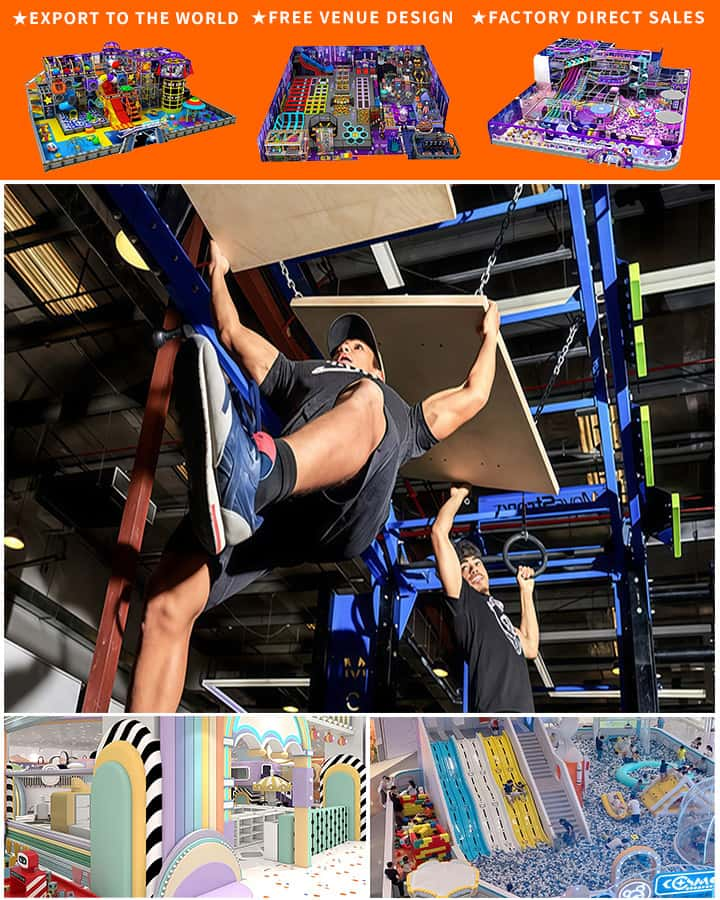Soft play equipment has revolutionized the way children enjoy indoor play areas, providing safe and engaging environments for endless fun. From colorful play structures to interactive activities, soft play equipment has become a staple in family entertainment centers, daycare facilities, and even at home setups. This article will delve into the various types of soft play equipment available, their benefits, and how they can transform any space into a delightful haven for young ones.
What is Soft Play Equipment?
Soft play equipment refers to a range of padded and cushioned structures designed specifically for indoor use by young children. Typically made from materials like foam, vinyl, and fabric, these items are crafted to prevent injuries while encouraging physical activity and imaginative play. Common pieces include ball pits, climbing frames, slides, tunnels, and interactive panels.
Types of Soft Play Equipment
Ball Pools and Ball pits: These are large, shallow pools filled with soft plastic balls, allowing children to dive in and explore. Ball pits promote sensory play and are excellent for developing motor skills.
Climbing Frames and Play Structures: These structures often feature multiple levels, ladders, and platforms, encouraging kids to climb, balance, and develop coordination. They are perfect for fostering physical fitness and confidence.
Slides: Soft play slides come in various shapes and sizes, offering gentle slopes that are safe yet thrilling. They provide an element of excitement and are great for encouraging adventurous play.
Tunnels and Hideaways: Children love crawling through tunnels and discovering hidden spaces. These elements enhance spatial awareness and can be part of larger play configurations.
Interactive Panels: Many modern soft play areas include touch-sensitive panels with lights, sounds, and educational content. These panels stimulate cognitive development and keep kids engaged for hours.

Benefits of Soft Play Equipment
Safety: One of the primary advantages of soft play equipment is its safety. The padding ensures that children can play without the risk of serious injury, making it ideal for unsupervised environments.
Physical Development: Climbing, sliding, and crawling help develop gross motor skills like balance, coordination, and strength. These activities are crucial for overall physical development.
Social Interaction: Soft play areas encourage social interaction, teaching kids essential skills like sharing, cooperation, and empathy. These settings often lead to the formation of friendships and positive social behavior.
Cognitive Growth: Interactive elements stimulate cognitive development by engaging children in problem-solving and decision-making processes. Educational panels can introduce letters, numbers, shapes, and more.
Parental Peace of Mind: Knowing that their children are playing in a safe environment allows parents to relax, socialize, or even attend to other tasks without constant supervision.
Choosing the Right Soft Play Equipment
When selecting soft play equipment, several factors should be considered:
Age Appropriateness: Ensure the equipment is suitable for the age group using it. Some items may be too challenging or unsafe for younger children.
Space Availability: Measure the area where the equipment will be placed to ensure it fits comfortably without overcrowding the space.
Quality and Durability: Invest in high-quality, durable equipment that will withstand heavy use and maintain its safety features over time.
Customization Options: Many manufacturers offer customizable options to match specific themes or color schemes, adding a personal touch to your play area.
Maintenance and Care
To ensure the longevity and safety of your soft play equipment:
Regular Cleaning: Wipe down surfaces regularly to remove dirt and prevent the buildup of germs. Use child-safe disinfectants for thorough cleaning.
Inspect for Damage: Routinely check for any signs of wear and tear. Replace damaged parts immediately to maintain safety standards.
Proper Storage: When not in use, store soft play equipment properly to protect it from dust and potential damage.
In conclusion, soft play equipment offers numerous benefits that make it a valuable addition to any indoor play area. From promoting physical and cognitive development to ensuring safety and fostering social skills, these play structures create magical spaces where children can learn, grow, and have fun simultaneously. Whether for a commercial venue or a home setting, investing in quality soft play equipment is a decision that brings joy and peace of mind to both kids and parents alike.




